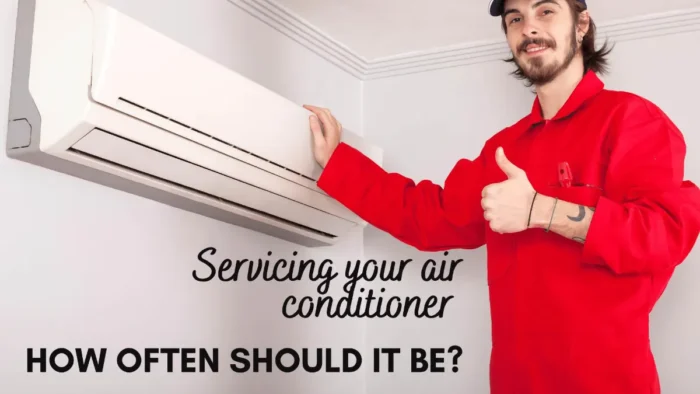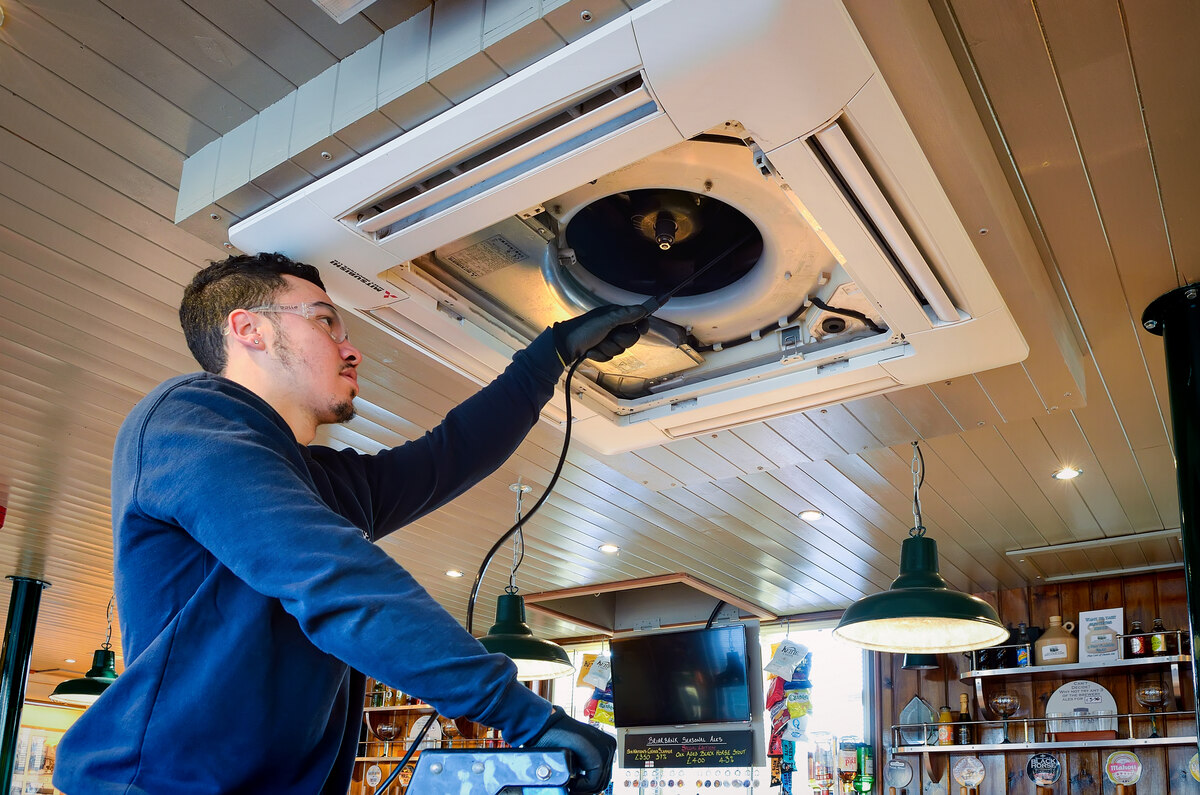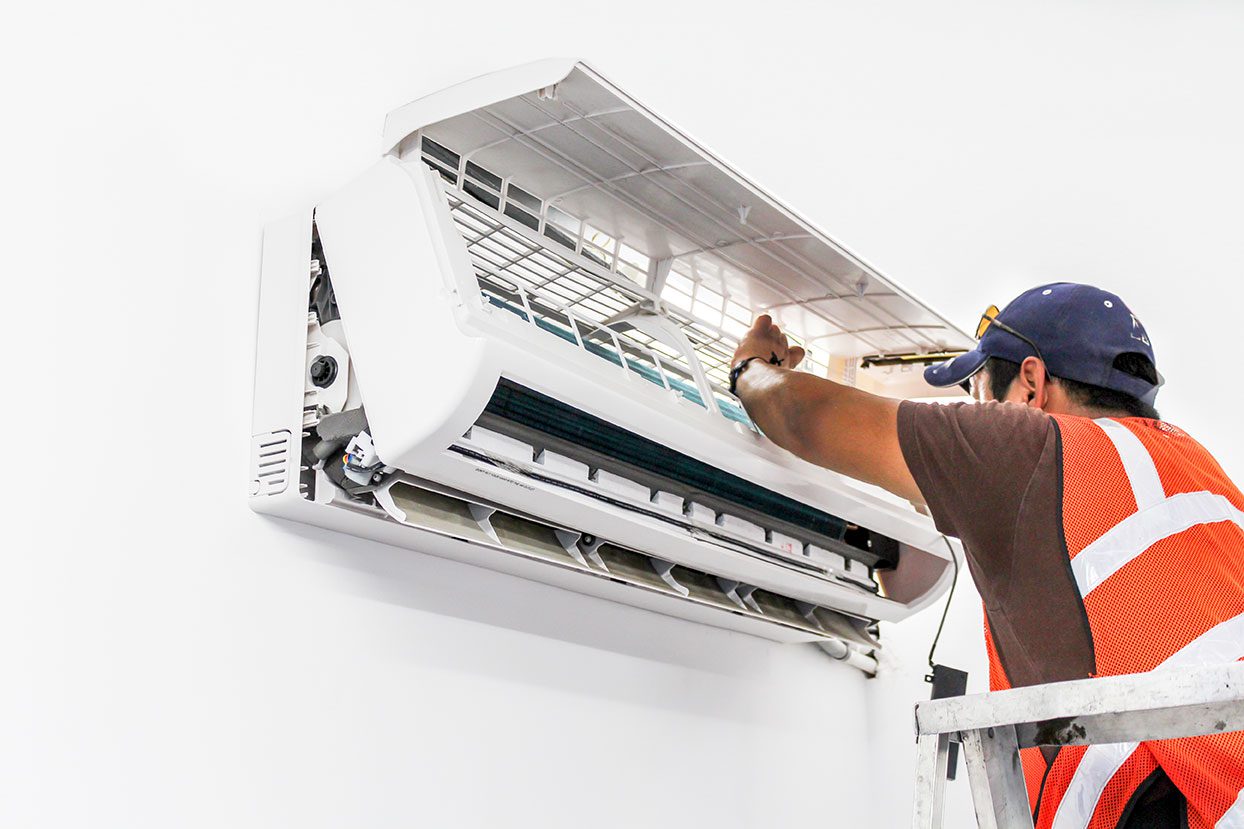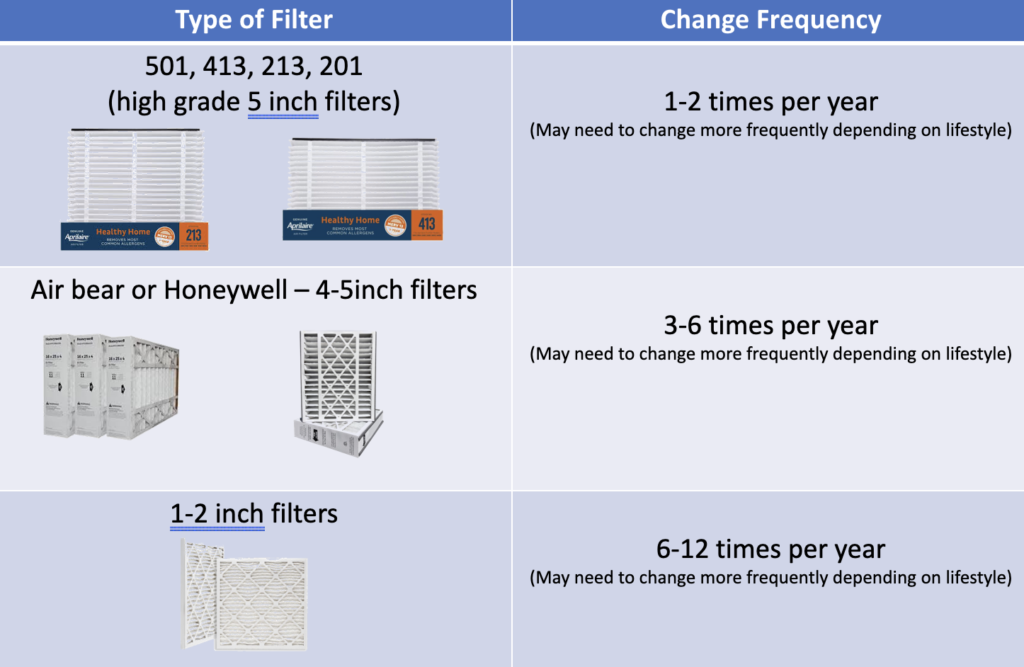How Often Should Central Air Be Serviced

Ever walk into your home on a scorching summer day, only to be greeted by a central air system that’s blowing… lukewarm air? Or worse, no air at all? This is a common homeowner headache, and often, it’s a sign that your AC system needs some attention. Let’s break down how to figure out what's going on and what you can do about it, before calling in the pros.
Diagnosing the Problem: Is Your AC on the Fritz?
Before you panic and schedule an expensive service call, let’s systematically investigate the issue. This step-by-step approach will help you pinpoint the problem and potentially save you money by fixing it yourself.
Step 1: The Obvious Checks (No Tools Required!)
Start with the simple stuff. It might sound silly, but these oversights are surprisingly common!
- Thermostat Settings: Is your thermostat set to "Cool" and at a temperature lower than the current room temperature? Make sure it's not set to "Fan Only" or "Heat." Double-check the batteries! A dead or weak thermostat can cause all sorts of problems.
- Breaker Panel: Locate your electrical panel and check the breaker for your AC unit (it’s usually clearly labeled). Is it tripped? If so, flip it all the way to the "Off" position and then back to "On." If it trips again immediately, do not keep resetting it – this indicates a more serious electrical issue that requires a professional.
- Air Filter: A dirty air filter is the number one cause of AC problems. It restricts airflow, causing the system to work harder and potentially freeze up. Remove the filter and hold it up to the light. If you can’t see much light through it, it’s time for a replacement.
Step 2: Investigating the Outdoor Unit (Condenser)
Next, head outside to your condenser unit (the big box usually sitting on a concrete slab). Safety first! Turn off the power to the unit at the breaker panel before poking around.
- Visual Inspection: Are there any obvious obstructions around the unit? Bushes, weeds, or debris can block airflow and cause overheating. Clear away anything within a 2-3 foot radius.
- Fin Condition: Look at the fins on the outside of the unit (they look like thin metal sheets). Are they bent or damaged? Gently straighten them with a fin comb (a cheap tool available at most hardware stores). Be careful not to damage them further.
- Fan Operation: After restoring power at the breaker, observe the fan on top of the unit. Is it spinning freely? If it’s making unusual noises or struggling to turn, there might be a problem with the fan motor. Do not attempt to repair the fan motor yourself – this requires specialized knowledge and can be dangerous.
Step 3: Checking the Indoor Unit (Evaporator)
The evaporator coil is located inside your air handler (usually part of your furnace). Again, turn off the power at the breaker before inspecting this unit.
- Frozen Coil: If your AC is blowing warm air and you suspect a frozen coil (a common symptom of low airflow), carefully inspect the evaporator coil. You might need to remove an access panel. If you see ice build-up, turn off the AC and let the ice melt completely (this could take several hours or even overnight). Once the ice is melted, try running the AC again. If it freezes up again, you have a bigger problem that needs professional attention.
- Drainage Pan: Check the condensate drain pan (usually located beneath the evaporator coil). Is it full of water? A clogged drain line can cause water damage and prevent the AC from working properly. You can try clearing the drain line yourself (see below).
DIY Solutions You Can Try (Safely!)
Okay, you’ve done some detective work. Now, let’s see if you can fix the problem yourself.
1. Replacing the Air Filter
This is the easiest and most important maintenance task. Replace your air filter every 1-3 months, depending on the type of filter and how often you use your AC. A clean filter improves airflow, efficiency, and air quality.
2. Clearing the Condensate Drain Line
A clogged condensate drain line is a common culprit for AC problems. Here’s how to clear it:
- Locate the Drain Line: It's usually a PVC pipe near your indoor unit or outside your house, near the foundation.
- Use a Wet/Dry Vacuum: Connect a wet/dry vacuum to the end of the drain line and suck out any clogs. You might need to seal the connection with duct tape to create a good seal.
- Flush with Vinegar: Pour a cup of white vinegar down the drain line to kill any algae or mold. Let it sit for about 30 minutes, then flush with water.
- Use a Wire Brush or Stiff Wire: Carefully insert a wire brush or stiff wire into the drain line to break up any clogs. Be gentle to avoid damaging the pipe.
3. Cleaning the Condenser Coils
Dirty condenser coils can reduce the efficiency of your AC. You can clean them yourself with a garden hose and a fin comb.
- Turn Off the Power: Disconnect the power to the unit at the breaker.
- Remove Debris: Clear away any leaves, grass, or other debris from around the unit.
- Hose Down the Coils: Use a gentle spray from your garden hose to wash away any dirt and grime. Avoid using a high-pressure nozzle, as this can damage the fins. Spray from the inside out.
- Straighten Fins (if needed): Use a fin comb to gently straighten any bent fins.
When to Call a Professional HVAC Technician
While some AC problems are easy to fix, others require the expertise of a qualified HVAC technician. Here are some situations where you should definitely call a pro:
- Refrigerant Leaks: If you suspect a refrigerant leak (you might notice a sweet, oily smell near the AC unit), do not attempt to fix it yourself. Refrigerant is a hazardous substance, and handling it requires specialized equipment and training.
- Electrical Problems: Any electrical issues, such as a constantly tripping breaker or burning smell, should be addressed by a qualified electrician or HVAC technician. Never attempt to work on electrical components unless you are properly trained and experienced.
- Compressor Problems: The compressor is the heart of the AC system, and it’s a complex and expensive component. If you suspect a compressor problem (e.g., loud noises, the unit won't start), call a professional.
- Frozen Coils (Recurring): If your evaporator coil freezes up repeatedly, even after you’ve cleaned the air filter and cleared the condensate drain line, there’s likely an underlying problem that needs professional attention (e.g., low refrigerant, airflow issues).
- Older Systems: If your AC system is more than 10-15 years old, it might be nearing the end of its lifespan. A professional can assess the system and recommend whether to repair or replace it.
- You're Uncomfortable or Unsure: If at any point you feel uncomfortable or unsure about performing a repair, it’s always best to err on the side of caution and call a professional.
How Often Should Central Air Be Serviced? The Importance of Preventative Maintenance
The best way to avoid major AC problems is to schedule regular preventative maintenance. Think of it like taking your car in for an oil change – it keeps everything running smoothly and prevents costly breakdowns down the road.
Generally, you should have your central air system serviced at least once a year, preferably in the spring before the cooling season begins. However, there are a few factors that can affect this frequency:
- Usage: If you live in a hot climate and run your AC frequently, you might consider servicing it twice a year (spring and fall).
- Age: Older systems tend to require more frequent maintenance than newer systems.
- Environment: If you live in a dusty or polluted area, your AC unit might need more frequent cleaning and filter changes.
- Manufacturer Recommendations: Check your owner's manual for specific maintenance recommendations from the manufacturer.
What does a professional AC service include? A typical service appointment includes:
- Inspection: The technician will inspect all components of the system, including the condenser, evaporator, compressor, and ductwork.
- Cleaning: They will clean the coils, fins, and other parts of the system.
- Testing: They will test the refrigerant levels, airflow, and electrical components.
- Lubrication: They will lubricate any moving parts to ensure smooth operation.
- Filter Replacement: They will replace the air filter (or advise you on when to do so).
- Problem Identification: They will identify any potential problems and recommend repairs or replacements.
The Benefits of Regular Maintenance:
- Improved Efficiency: A well-maintained AC system runs more efficiently, saving you money on your energy bills.
- Extended Lifespan: Regular maintenance can extend the lifespan of your AC system.
- Reduced Repairs: Preventative maintenance can help you catch small problems before they become big (and expensive) ones.
- Improved Air Quality: A clean AC system helps to improve the air quality in your home.
- Peace of Mind: Knowing that your AC system is in good working order can give you peace of mind during the hot summer months.
By following these tips and scheduling regular maintenance, you can keep your central air system running smoothly and efficiently for years to come. Don’t be afraid to tackle the simple DIY tasks, but always remember that safety comes first. When in doubt, call a professional!










